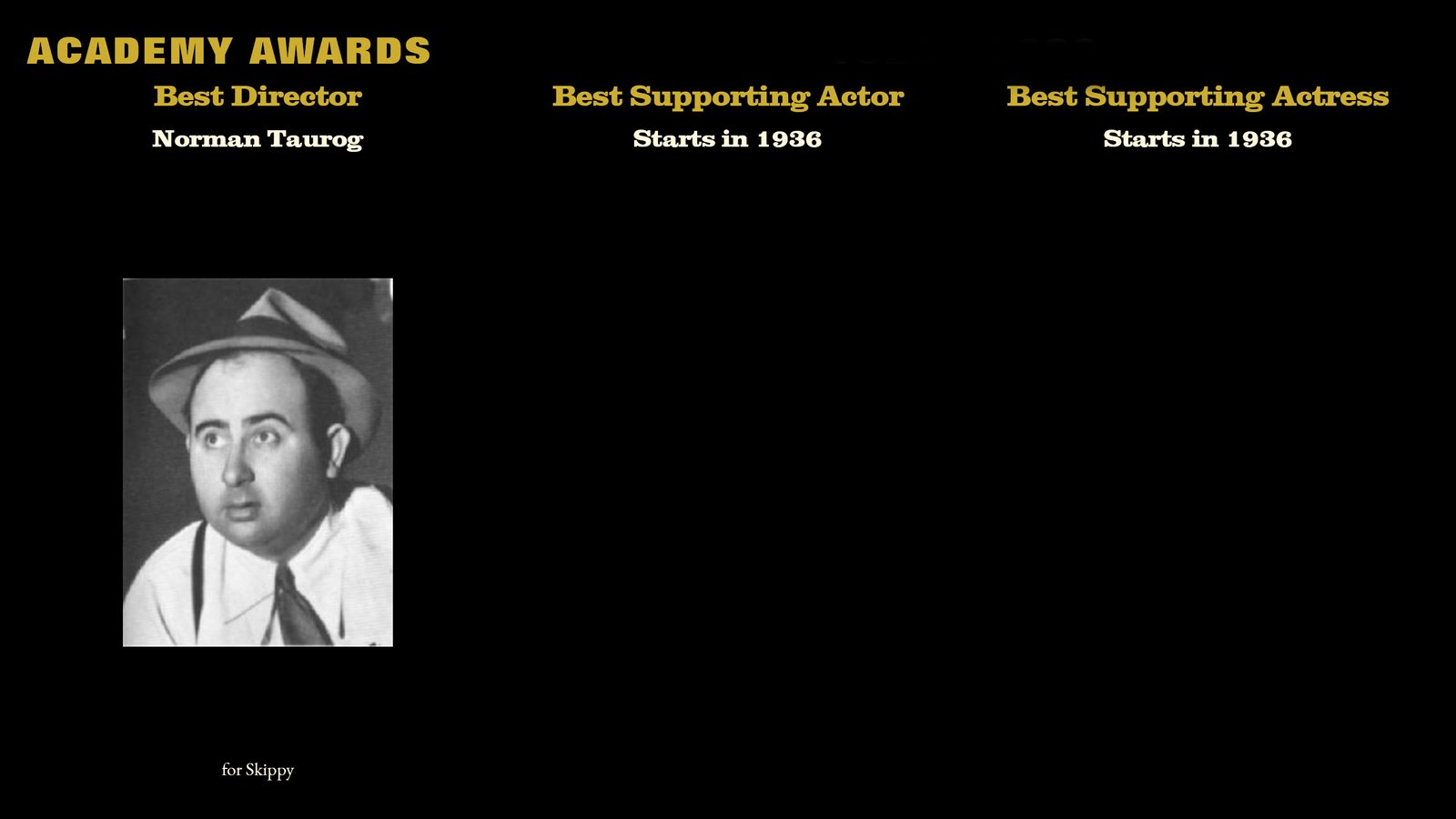

Cimarron is a 1931 American western directed by Wesley Ruggles. The film is based on the 1929 novel of the same name by American writer Edna Ferber. Ruggles won the Oscar for Best Picture for this film.
Marie Dressler, born Leila Marie Koerber (Cobourg (Ontario), November 9, 1868 – Santa Barbara (California), July 28, 1934) was a Canadian stage and film actress.
Dressler’s father was originally from Austria. At 14, she entered the theater. In 1892, she joined Broadway. She married George Hoppert in 1900. They were married through 1906 and had one child who died at an early age.
In 1910, Dressler starred in the play Tillie’s nightmare. Director Mack Sennett was very impressed and made a film about it in 1914. This became the first film in which Dressler starred. This film also featured Charlie Chaplin. Also in this year she went to live with James Dalton and she would stay with him until his death.
After the film, Dressler made six more films but ran out of work in 1918. She also failed to achieve success in the theater. Not until nine years later, in 1927, was interest in the actress again. Frances Marion, an important person at MGM, supplied her with a small role in The Joy Girl. Her popularity rose slowly, and eventually the advent of the sound film was her salvation. Although Greta Garbo starred in the film Anna Christie (1930), Dressler received rave reviews for her portrayal in it.
In 1931, Dressler received an Academy Award for Best Actress for her role in Min and Bill. She was nominated again in 1932 for her role in Emma, but ultimately did not receive an Oscar for it. In 1933, she starred in the popular film Dinner at Eight, and she was at the top of her career. A year later, however, she died of cancer.
Lionel Barrymore, born Lionel Herbert Blythe (Philadelphia (Pennsylvania), April 28, 1878 – Van Nuys (California), November 15, 1954) was an American actor.
Lionel Barrymore was first seen on screen in 1908. Only 3 years later, in 1911, he became a real actor. Between 1911 and 1917, Lionel made 93 films. Later, Lionel joined the film production MGM. He was their favorite and therefore worked non-stop in the most famous films. He also proved himself as a director in the period from 1929-1931. Lionel was most famous in the 30s, 40s and 50s. In 1930, Lionel received an Academy Award for his role in the film A Free Soul. He worked as an actor until his death.
Norman Rae Taurog (Chicago, Feb. 23, 1899 – Rancho Mirage, April 7, 1981) was an American film director and screenwriter, with more than 140 films to his credit. He also has a star on the Hollywood Walk of Fame.
He began his career in the film industry at the age of 13, in the film Tangled Relations. He then worked in theater.
Later he became a director. His directorial breakthrough was in 1931 with Skippy, for which he won an Oscar.
Other films he made in the 1930s included Sooky with Jackie Cooper, Rhythm on the Range with Bing Crosby and Broadway Melody of 1940 with Fred Astaire. He also worked with major stars in the 1940s, including with Judy Garland in Presenting Lily Mars.
In the 1950s, Dean Martin and Jerry Lewis were the most popular comic duo on the silver screen, and Taurog was allowed to direct six of the duo’s films: Jumping Jacks, The Stooge (1953), The Caddy (1954), Living It Up (1955), You’re Never Too Young (1954) and Pardners (1956). Even when the duo broke up, Taurog continued to work with Jerry Lewis, with Don’t Give Up the Ship (1959) and Visit to a Small Planet (1960).
Also, Taurog directed GI Blues, starring Elvis Presley. Presley’s manager, Colonel Tom Parker, was impressed with Taurog’s directorial work, resulting in Taurog being allowed to direct eight more Elvis Presley films: Blue Hawaii (1961), Girls! Girls! Girls! (1962), It Happened at the World’s Fair (1963), Tickle Me (1965), Spinout (1966), Double Trouble (1967), Speedway (1968) and Live a Little, Love a Little (1968).
A year after the recording of Live a Little, Love a Little, he went blind, ending his career. He died in 1981.



